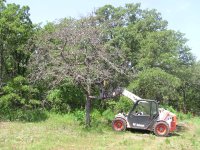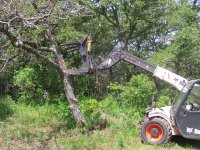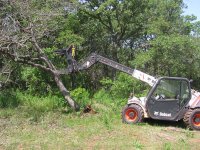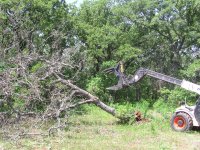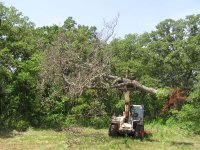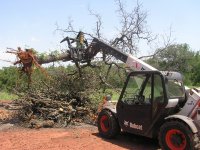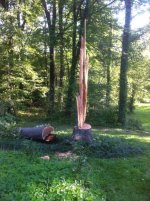newbury
Super Star Member
- Joined
- Jan 8, 2009
- Messages
- 14,009
- Location
- From Vt, in Va, retiring to MS
- Tractor
- Kubota's - B7610, M4700
If you are going to use rope do two or three things - throw a heavy carpet or something over it part way up so it CAN'T snap back and hit you, measure the trees height and add about 10% for the distance to be away from the tree, use a snatch block if at all possible. Never use the plan that you can run as it falls.By design, some rope stretches and some does not. I won't use rope to pull down anything. I use either chains and/or wire cable attached to a come along. The come along is nice and slow so I can see how things are going AND I can feel what is happening. I tried to help a neighbor pull out a log with my tractor using climbing rope. I told him that rope was designed to stretch if the climber fell and it was not likely to work but I would go get some chains. He insisted on using the rope which did not work.
I might be paranoid but when I was a kid, I saw two guys cut down huge pine tree in a pine stand next to a trailer. They hooked up a cheap rope to the back of a truck, cut the tree a bit and started driving the truck. I told my dad this was not a good idea since if the rope was not long enough someone was going to die. One of the stupidest things I have seen and I have some seen some really dumb a...ssed stunts. Luckily the rope was long enough but just barely so. These guys might have inspired Dumb and Dumber.
Later,
Dan
Also if there are ANY other trees around THEY WILL REACH OUT and try to save the tree you are cutting down from falling where you want it to fall. I've seen trees do a 360 on the way down, I'd swear they will jump off the stump and into another tree.
